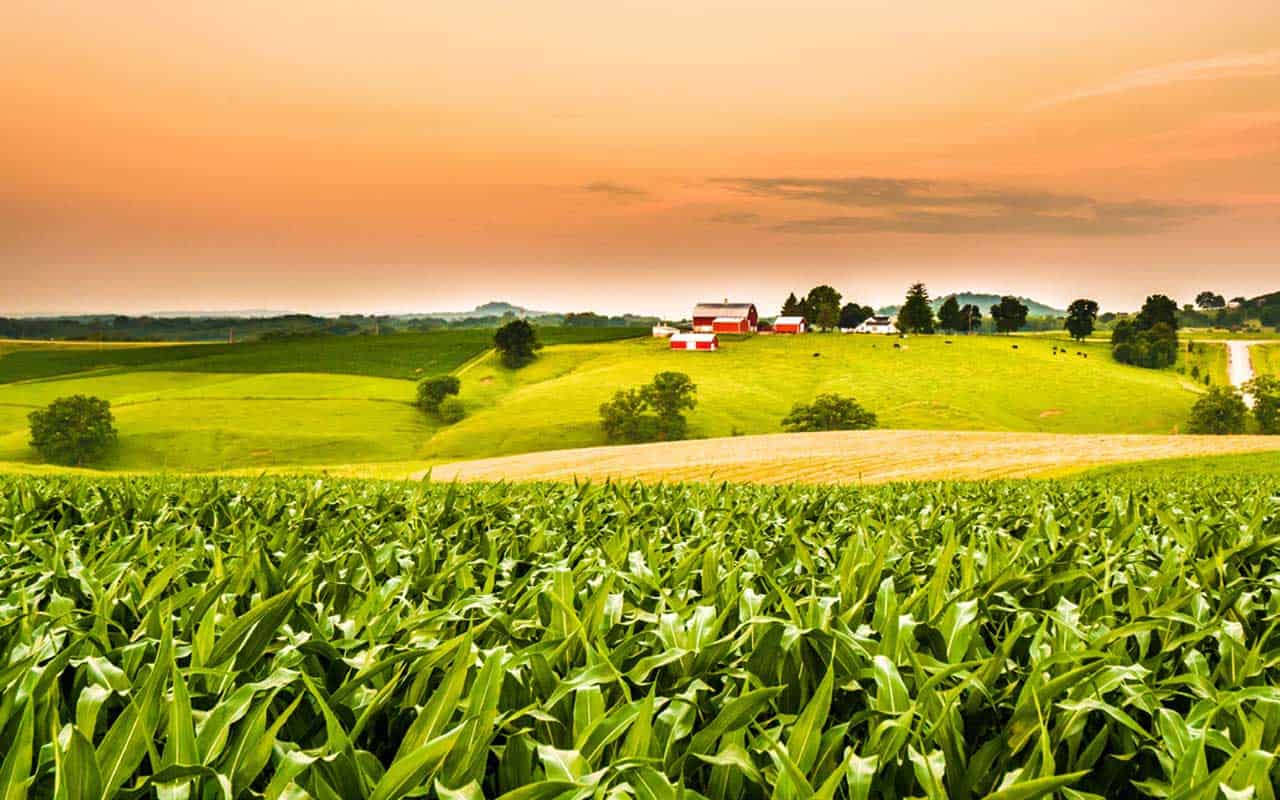This Month’s Featured Article

US Farm Bill Update & Scenic Hudson
 Congress is getting ready to shape the 2023 Farm Bill. Here’s a snapshot of some of the agriculture industry’s hot topics.
Congress is getting ready to shape the 2023 Farm Bill. Here’s a snapshot of some of the agriculture industry’s hot topics.
The 2023 Farm Bill supports family farms through conserving natural resources and promoting the agricultural economy. Approximately every five years, America’s farm-related businesses are affected by this federal bill—a significant piece of legislation that is voted on and passed by Congress. Due to its sheer size and scope, this bill impacts many livelihoods, the economy, the food industry, and beyond.
The recent Inflation Reduction Act committed $20 billion to fund conservation programs in the bill, including those focused on addressing climate change. This funding provides a significant new opportunity to enhance the connection between strategies that provide fresh food, support our agricultural economy, and address climate change.
The bill is the largest source of federal funding in history – $867 billion when last updated in 2018 – to support US agriculture and conserve farm and forest land. It is currently being shaped for reenactment in 2023.
Separated into 12 sections or “titles,” the bill includes a range of topics that relate to farming livelihoods, conservationism, commodities, nutrition, forestry, energy, rural development, and beyond.
Farming in America
According to the United States Department of Agriculture, the agriculture sector extends beyond the farm business to include a range of farm-related industries. In 2021, agriculture, food, and related industries contributed 5.4% to US gross domestic product and provided 10.5% of US employment. Americans’ expenditures on food amounted to 12% of household budgets on average.
The USDA’s Economic Research Service defines gross cash farm income as annual income before expenses. It includes cash receipts, farm-related cash income, and government farm program payments. In 2022, the USDA forecasted GCFI at $600 billion.
The Northeastern part of the US, which includes New England, New York, Pennsylvania, and New Jersey, is home to 56 million people. This area contains an extraordinary network of family farms that are on the cutting edge of sustainability and market innovation.
In 2017, the northeast region’s 430,350 agricultural producers contributed an estimated $78 billion to the nation’s agricultural industry. The Hudson Valley’s extensive farming industry is included in this estimate.
The Bill
Many parts of the Farm Bill directly impact farmers in the Hudson Valley region. Here’s how:
• They fund federal conservation programs such as Environmental Quality Incentives Programs and Conservation Stewardship Program and support growers in using climate-smart practices.
• They enhanced access to USDA programs for under-represented producers and economically distressed farmers.
• They expand programs and farmer- and forest-owner outreach for forest protection, agroforestry, urban farms, and community gardens that contribute to nature-based industries and the food economy.
• They provide resources to Hudson Valley communities through the Nutrition Title, which reauthorizes nutrition and domestic food assistance programs, making up nearly 76% of the Farm Bill’s mandatory spending.
Scenic Hudson helps
Given the importance of farms in rural settings, and increasingly in more urban territories, Scenic Hudson – an organization committed to preserving and strengthening the region’s assets – is working with its allies to ensure that the Farm Bill provides the necessary support.
The Poughkeepsie-based organization continually strives to achieve its mission to preserve the many open spaces, working farms, and historic cities and town centers that make this region so special.
Scenic Hudson’s engagement with regenerative agriculture includes: regenerative agriculture demonstration areas, which work with farmers to pursue regenerative practices that will inform research and soil health monitoring; the Hudson Valley Carbon Farming Project, which includes supporting the legislation that led to the pilot and providing future outreach on outcomes; and organizational engagement with growers that have agricultural easements on their lands associated with Scenic Hudson land trust.
NECA pitches in
The Northeast Carbon Alliance unites land managers, scientists, and public policy experts to realize the power of natural climate solutions to combat climate change. Its range extends from “mountaintop to ocean floor” in the Hudson Valley, other parts of New York, the Northeastern States, and beyond.
The organization engages with farmers, forestry professionals, forest owners, and the scientific conservation community through:
• NECA member events, which cover relevant topics ranging from forest carbon management to biochar,
• An active NECA website, which provides valuable information and research for stakeholders interested in climate-smart farming and forestry practices.
Both Scenic Hudson and NECA will continue to work with farmers to help them sustainably adopt and implement regenerative farm practices.
Farmers of the future
Many farming/agriculture graduates accrue a lot of debt from their studies. People from various sectors of society are working to help those potential farmers reduce that debt.
Another key issue lies in attracting people to the industry. In the US, the average age of our farmers is 60 years old. As our farmers age, many yearn to retire. Unfortunately, there aren’t many people interested in taking over their businesses. Helping people discover how rewarding a career in farming can be is essential to the success of the industry.
Bill and Kathy Emmrich own a second-generation farm in Holmdel, NJ. The farm’s day-to-day responsibilities rest solely with this retired couple. “All of our family members enjoy the woods and the produce we grow, but they will not continue to work the farm when we’re unable to do this work. This trend is unfortunate for our family farm,” said Emmrich.
Some solutions
Scenic Hudson and NECA plan to help sustain the next generation of farmers by promoting diversity, racial equity, and justice through agricultural policy.
“An increasing number of farmers are approaching retirement age, and we want to increase access to farmland for BIPOC (Black, indigenous, and people of color) farmers, and other historically under-represented members of the region, including women, young farmers, and beginners,” said Peter Lopez, executive director of policy, advocacy, and science, Scenic Hudson.
Climate change
“As Scenic Hudson and our partners focus on solutions, we embrace the critical role our farms can play in supporting society’s efforts to fight climate change. We fully recognize that increasingly, we are asking our farms and farmers to do more. We are calling on them to be environmentally sustainable within their own operations; key resources for reducing carbon in other sectors of the economy; producers of safe, local, nutritious food; socially just and equitable; and economically viable,” said Ned Sullivan, president, Scenic Hudson.
While Scenic Hudson and NECA are focused on helping farmers and other land managers adopt practices that sequester carbon, it recognizes that to be part of the climate solution – and meet growing demands for locally-produced food – farms must remain viable.
“Scenic Hudson recognizes that the number and diversity of farms in the Northeast, coupled with their proximity to metropolitan areas, positions this region to be a national leader in advancing climate solutions as well as strengthening equity, opportunity, and economic stability for current and future farmers, while meeting rising demands for fresh food,” added Sullivan.
Grazing tactics
Chaseholm Farm in Pine Plains, NY, is also doing its fair share to battle climate change via its Hudson Valley Carbon Farming Pilot Project. It set up a system that leads cows to “rotationally graze.”
Farmer Sarah Chase explained that in a continuous grazing system, the grass can’t keep up with the cows. In a prescribed system, farmers set up areas where cows can and can’t graze. “The cows do a clean job taking down all those plants, and then that zone can regrow. The farm is now ‘grazing taller,’ which means not turning the cows into it until the grass is taller than it had been when we were first grazing the cows,” she added.
That way, Chase can control the amount of energy the cows are getting. Beyond getting protein from the lush grass, which is generally down lower on the plant, they’re eating “higher-energy, top-of-the-plant, photosynthesizing, very green and active forage.”
Leaving a little more residual helps the plant grow back faster; carbon is sequestered by the plant photosynthesizing and sending carbon dioxide down into the soil, where it is traded with the microbes through the roots and exudates.
“We call our system not just rotational grazing, but adaptive planned grazing because it feels really important that the grass managers are responding to weather events,” said Chase. This strategy provides more resilience. It’s part of the tool set for managing a forage-based farm in a time when climate change is causing all sorts of chaos in the way farmers were used to doing things. It takes a real change of management style.
That means spending a lot more human time setting up fences and taking down fences. It means designing your farm in a different way. “Besides the time and learning, there’s not a ton of investment, and I think that it does pay dividends long-term for farm health, animal health, and, in our case, both milk and meat quality. I would absolutely endorse some version of an adaptive grazing plan that works for you,” concluded Chase. •
Scenic Hudson outlines some guiding considerations and principles for the 2023 Farm Bill:
• New and beginning farmers, under-represented producers, and economically distressed farmers require greater and enhanced access to USDA programs to unlock their environmental and economic potential.
• Science-based research and technical support is essential to provide practical, cost-saving solutions to producers to help them respond to emerging management issues while maintaining and/or increasing production.
• Forest protection, agroforestry, urban farms, and community gardens are important contributors to the future of natural resource-based industries and the food economy.
• Delivery of technical assistance and support is strongest when conducted in partnership with state governments, not-for-profit organizations, and academic institutions.
Strategies
Scenic Hudson has also identified several key strategies for supporting climate-resilient agriculture.
1. Payment for Practices
Farmers can effectively advance federal policy objectives through their management of farm soil, but require government-backed incentives, as few, if any, private market mechanisms exist. This work will promote early adoption of new and innovative practices with an eye on ensuring these practices are successfully incorporated into family farm businesses.
2. Packaging and Accessibility of Targeted Technical and Financial Assistance
While funding is critical to incentivize best-practice management of farmland, forests, and natural resources, it is strongest when accompanied by expert knowledge, delivered by extension services, soil and water conservation district employees, and organizations familiar with, and responsive to, the local culture and economy.
3. Local Networks and Demonstration Projects
Research proves, again and again, that farmers learn best from witnessing other farmers firsthand.
To learn more about Scenic Hudson and its affiliates, you can visit them online at scenichudson.org.



